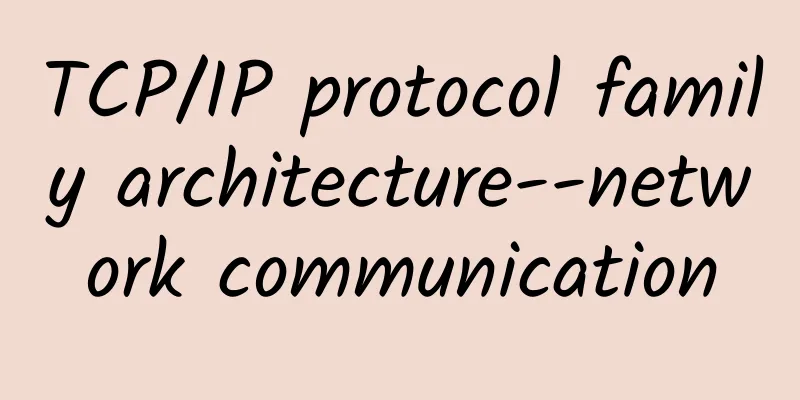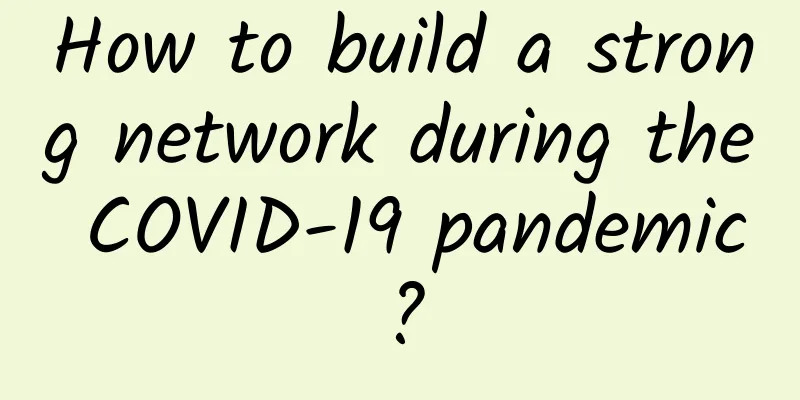TCP/IP protocol family architecture--network communication

|
Computers and network devices need to follow the same rules to communicate with each other. For example, how to find the communication target, which language to use for communication, how to end the communication, etc. The communication between different hardware and operating systems needs to follow the same rules, which are also called protocols. This article mainly discusses the TCP/IP protocol family related to the Internet from the following three points.
1. What is the TCP/IP protocol suite? The TCP/IP family is a general term for a collection of various Internet-related protocols, as shown in the following figure 2. TCP/IP protocol four-layer model An important point about TCP/IP is that it is layered. Each layer performs different functions and is implemented through several protocols. The upper layer protocol uses the services provided by the lower layer protocol. It is usually divided into the following four layers
The advantage of layering is that it makes the design more flexible. For example, if the Internet is coordinated by only one protocol, if some parts need to be modified, it will affect the whole. After layering, you only need to replace the layer that needs to be modified. By planning the interface between each layer, the layers are decoupled, and then each layer can be freely designed and modified. 3. The relationship between the TCP/IP protocol model and the ISO/OSI model 7-layer model
Relationship: ISO/OSI model is an open communication system interconnection reference model (7-layer model), and network communication interconnection is implemented with reference to this model. The TCP/IP protocol model divides the protocols in the TCP/IP protocol family into each layer of the four-layer model. According to the corresponding relationship between the TCP/IP model and the ISO/OSI model in the following figure, the place (layer) where each protocol in the protocol family plays the role of rules in the open communication system interconnection reference model is mapped. Summarize The TCP/IP family is composed of multiple protocols related to the Internet. One of the key points of TCP/IP is that it is divided into a four-layer model. Each layer performs different functions and corresponds to several protocols. The upper layer protocol uses the services provided by the lower layer protocol. The benefit of layering is that it makes design modifications easier. The ISO/OSI model is an open communication system interconnection reference model. By corresponding to the TCP/IP model, we can know the position of each protocol in the TCP/IP protocol family in the communication system interconnection reference model. |
<<: What is the difference between a wireless router and an optical modem? This article tells you
>>: An Internet cable makes the whole dormitory building quieter after lights out
Recommend
Is the time ripe for “rate experience billing” in 5G multi-dimensional billing?
July 5 During the just-concluded mobile communica...
Gcore (gcorelabs) Russian Khabarovsk VPS simple test
In the last article, I shared the simple test inf...
Kai-Fu Lee: Under what conditions will artificial intelligence surpass humans?
[51CTO.com original article] In recent years, art...
Analyzing the technology behind short videos and reopening the battle against CDN
If the live streaming industry was booming in 201...
Experts gather between REST, gRPC and GraphQL!
REST, GraphQL, and gRPC are the three most common...
400G technology development will become clearer in 2017
With the rapid development of technologies such a...
Grasp the pulse of the times and serve industrial development | Information technology innovation to promote new infrastructure sub-forum was successfully held
On November 27, the "2020 China Tongming Lak...
The United States suddenly changed its mind and allowed Huawei to cooperate in formulating 5G standards, only to shoot itself in the foot because of the Entity List
This article is reprinted with permission from AI...
What will the future world look like under the 5G technology revolution?
Some time ago, Huawei's "Intelligent Wor...
Interviewer asked: Tell me about the principle of IP address allocation
1. Introduction to network model In computer netw...
Operators begin trial operation of number portability: multiple restrictions, netizens are disappointed
We are not unfamiliar with number portability. As...
Why do mobile network testers still pursue speed at all costs?
Communications operators must refocus on covering...
10 SD-WAN projects to watch
[[323303]] GlobalConnect | Versa Networks GlobalC...
China Telecom will commercialize 5G independent networking in more than 300 cities
On November 7, Li Zhengmao, general manager of Ch...
Hybrid office becomes a trend. Cisco uses intelligent technology to improve office experience
According to the survey results of Cisco and a th...









